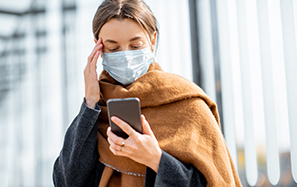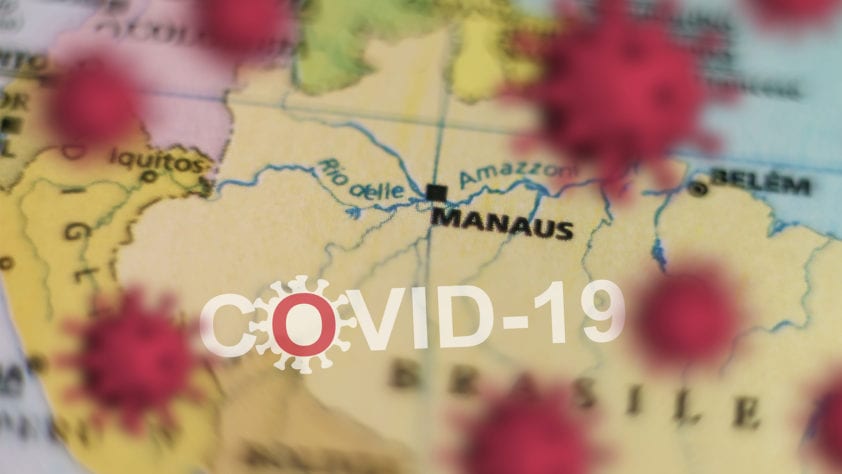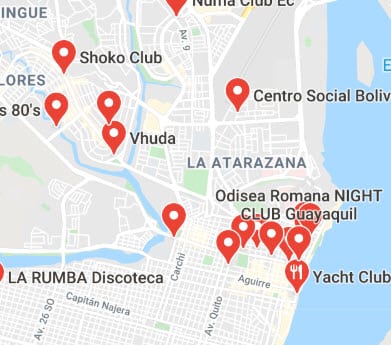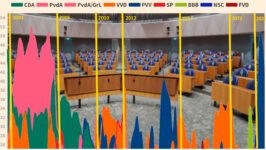The major outbreaks in Manaus (Brazil) and Guayaquil (Ecuador) are often used to demonstrate that the effect of high humidity I've been pointing at, cannot be true. Unfortunately, that says more about the general state of ignorance about how the virus spreads than it does about my reasoning. This article explains why.
Lees volledig artikel: What do Manaus and Guayaquil tell us?
What do Manaus and Guayaquil tell us?
In Manaus (Brazil) and Guayaquil (Ecuador) we see large corona outbreaks. These are locations where it was/is warm and there is often high humidity. These two examples are regularly used to show that what I (and many others) say about the effect of high humidity on the spread of the virus cannot be true.
But precisely those statements (unfortunately not only made by amateurs, but also by virologists and epidemiologists) show that one doesn’t have a clue about how the virus actually spreads, so one doesn’t know how to fight it in an intelligent way and suffices with repeating mantras like “keep a 1,5 meter distance” and “wash your hands well” and “mouth guards only give false safety” and “beware of the second wave”.
- A pattern in which the flu breaks out once a year (in winter). We see this above 30 degrees north latitude, where the areas with temperate weather (i.e. also the area where we live) are locate
- The spread pattern of COVID-19 shows a clear resemblance to that of influenza, and a lot of study has been done on this. When you look at the scientific studies of the spread of influenza around the world, striking patterns can be identified:
Pattern
In tropical countries we don’t see that pattern. There are sometimes two peaks (but not in winter) or a more even distribution. A recent article from November 2019 in Popular Science describes this well. And also this Australian article describes that. Close to the equator we see a very different pattern with regard to influenza than we know in our region.
In all those years scientists have not found a good explanation why that pattern is so different in those tropical regions. I do have a suspicion, but that is very speculative and not relevant at the moment.
Both Manaus and Guayaquil are very close to the equator (2 and 3 degrees south latitude). In both cities there has been a super spread event, which I will come to in a moment. So it seems that COVID-19 also shows a different spreading pattern close to the equator than in temperate weather areas. For the same – seemingly unknown – reasons that influenza does!
And so the developments around the equator cannot be used to apply those one-on-one to the patterns in our areas. In the Netherlands we have to focus on the patterns we see in areas above 30 degrees north latitude, and not on areas with other patterns.
Big outbreak
Having said that, I like to address the big outbreak in those two cities near the equator. Because even there it is clear, that super spread events triggered an exponential increase in infections.
If we look at Manaus and Guayaquil, we see large-scale carnival events at the end of February. This is a picture of Manaus on the 22nd of February. More or less similar to the pictures from other places.
That the first case was discovered on February 29th in Guayaquil (!), in a woman who had come from Spain.
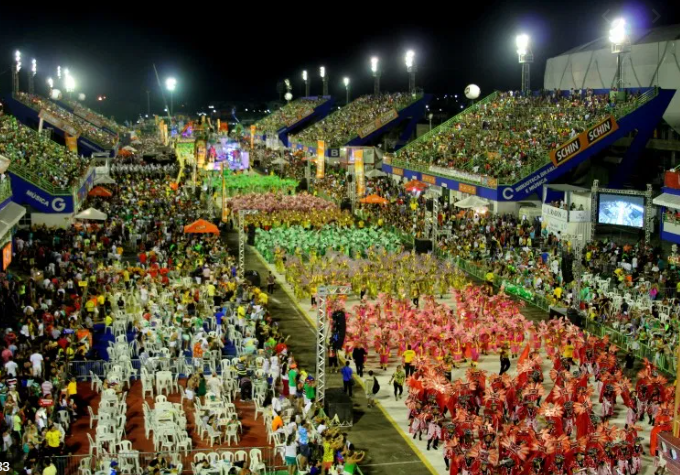
Condition of infection
But now one can object that there have been carnival celebrations all over South America, without any major outbreaks there. And that exactly hits the core of what you can learn from these two outbreaks in South America.
First of all, the condition of the infection is of course that there was at least one person present who was infected and didn’t know it himself. Just at the end of February, the virus hadn’t spread that massively yet, so you had a very good chance in South America to be present at major events, without getting infected there. In Brazil it is indicated that the first infected persons were rich Brazilians who had been on winter sports in Northern Italy. In Ecuador it is said that the first case was discovered on February 29th in Guayaquil (!), in a woman who had come from Spain.
Northern regions
And in our northern regions, it seems unlikely to me that the large outbreak occurred during carnival parades outside. Or the City-Pier-City run on March 8th in the Netherlands, or the Feyenoord-Willem II soccer match caused those. It is much more likely that if there were large-scale outbreaks, they happened indoors, with many people in confined spaces like clubs, party halls, bars, etc. (as has been the case on winter sports in the big clubs in Sankt Anton. Here’s a report from an Amsterdam group that was there).
If you see the development of the number of infected people shortly after the outbreak, it seems to have started during the carnival there. But take a look at this map of that city and the many clubs in the center, including some large ones. People are partying in there and I wouldn’t be surprised if the airco’s are working very hard. I don’t think that’s much different from the party hall in Kessel with 500 people on March 5th. (Except of course the music and the clothes they wore). But it could be that the unique situation close to the equator (near the 37 degrees and high humidity) in the evening, the aerosols stayed airborne for a long time.
Carnival
If you look at the development in the figures of Manaus you see that there was no outbreak during the Carnival in February. The super spread event must have taken place later, between 10 and 15 March, because that’s when the outbreaks started. During parades, church services or feasts. And also in Manaus there are a number of very large clubs.
It’s a pity that in the decades of research into influenza, so few hard explanations have been given for the different patterns of spread. If we had, we would have been better off fighting the spread of COVID-19.
But there is something interesting about studying COVID-19. Because nobody was infected yet, the spread is much easier to investigate. The pattern of influenza spread was (strongly) obscured by the fact that a not insignificant proportion of people were already immune to the “flavor of the year” of the influenza virus. This is not the case with the coronavirus.
You would think (and hope) that this is an ideal opportunity for good scientists to study and explain the spread patterns. This will also help us with future new influenza outbreaks.
And if that’s going to happen, I’m sure much of what I’ve written in my blogs over the past 6 weeks will be confirmed.
What do Manaus and Guayaquil tell us?



